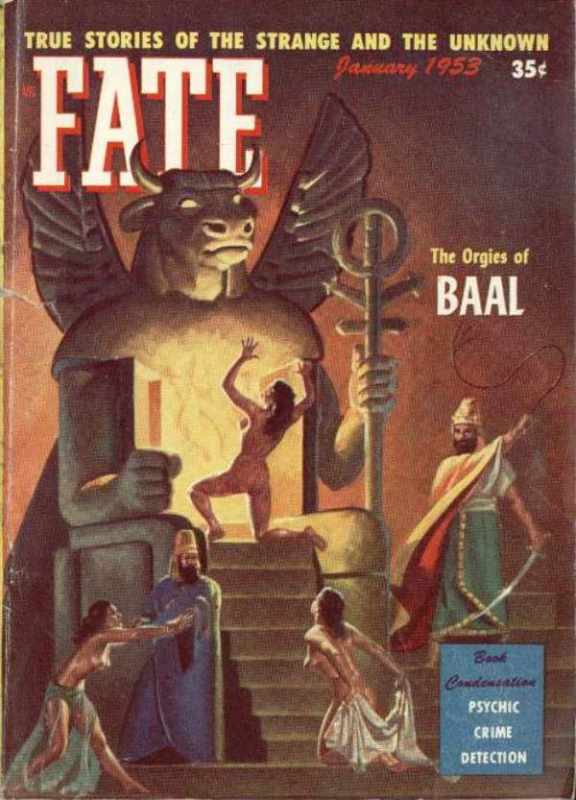Baʿal Berith and El Berith are two gods, worshiped in Shechem, in ancient Canaan, according to the Bible. The term for “covenant” appears also in Ugaritic texts (second millennium BCE), in connection with Baʿal, and perhaps as Beruth in Sanchuniathon’s work. In the Bible, Judges is the only book that mentions Baʿal Berith and El Berith. It is not clear whether they are actually one god, nor whether they are separate forms of Baʿal and El. Scholars suppose that he or they may have been worshipped for connections to fertility and vegetation, based on another passage in Judges. Also unclear is what covenant or covenants are referred to by the name Berith. The idol Baʿal Berith, which the Jews worshipped after the death of Gideon, was identical, according to the Rabbis, with Baʿal Zebub, “the lord of flies,” the god of Ekron. He was worshipped in the shape of a fly; and Jewish tradition states that so addicted were the Jews to his cult that they would carry an image of him in their pockets, producing it, and kissing it from time to time. Baʿal Zebub is called Baʿal Berith because such Jews might be said to make a covenant of devotion with the idol, being unwilling to part with it for a single moment. According to another conception, Baʿal Berith was an obscene article of idolatrous worship, possibly a simulacrum priapi. This is evidently based on the later significance of the word “berit,” meaning circumcision. According to the Admirable History written by Father Sebastien Michaelis in 1612, Baʿal Berith once possessed a nun in Aix-en-Provence. In the process of the exorcism, Baʿal Berith volunteered not only his own name and the names of all the other demons possessing her, but the names of the saints who would be most effective in opposing them.
| Alias Baal |
| Real Names/Alt Names Baal |
| Characteristics Biblical Figures, Myths & Legends, Paranormal Mysteries, Deity, Demon, Prehuman Epoch |
| Creators/Key Contributors ○ |
| First Appearance Ancient Mesopotamian mythology |
| First Publisher ○ |
| Appearance List Literature: The Baal Cycle (c. 1500–1300 BCE), Hebrew Bible (Tanakh), The King James Version of the Bible, The Goetia: The Lesser Key of Solomon the King by Mathers and A. Crowley (1904), Myths and Legends of Babylonia and Assyria by Lewis Spence (1916) [Internet Archive], “The Orgies of Baal” in Fate magazine (Jan 1953), Ancient Near Eastern Texts Relating to the Old Testament (1969) |
| Sample Read Ancient Near Eastern Texts Relating to the Old Testament [Web] |
| Description Baʿal Berith and El Berith are two gods, worshiped in Shechem, in ancient Canaan, according to the Bible. The term for “covenant” appears also in Ugaritic texts (second millennium BCE), in connection with Baʿal, and perhaps as Beruth in Sanchuniathon’s work. In the Bible, Judges is the only book that mentions Baʿal Berith and El Berith. It is not clear whether they are actually one god, nor whether they are separate forms of Baʿal and El. Scholars suppose that he or they may have been worshipped for connections to fertility and vegetation, based on another passage in Judges. Also unclear is what covenant or covenants are referred to by the name Berith. The idol Baʿal Berith, which the Jews worshipped after the death of Gideon, was identical, according to the Rabbis, with Baʿal Zebub, “the lord of flies,” the god of Ekron. He was worshipped in the shape of a fly; and Jewish tradition states that so addicted were the Jews to his cult that they would carry an image of him in their pockets, producing it, and kissing it from time to time. Baʿal Zebub is called Baʿal Berith because such Jews might be said to make a covenant of devotion with the idol, being unwilling to part with it for a single moment. According to another conception, Baʿal Berith was an obscene article of idolatrous worship, possibly a simulacrum priapi. This is evidently based on the later significance of the word “berit,” meaning circumcision. According to the Admirable History written by Father Sebastien Michaelis in 1612, Baʿal Berith once possessed a nun in Aix-en-Provence. In the process of the exorcism, Baʿal Berith volunteered not only his own name and the names of all the other demons possessing her, but the names of the saints who would be most effective in opposing them. |
| Source Baal Berith – Wikipedia |

